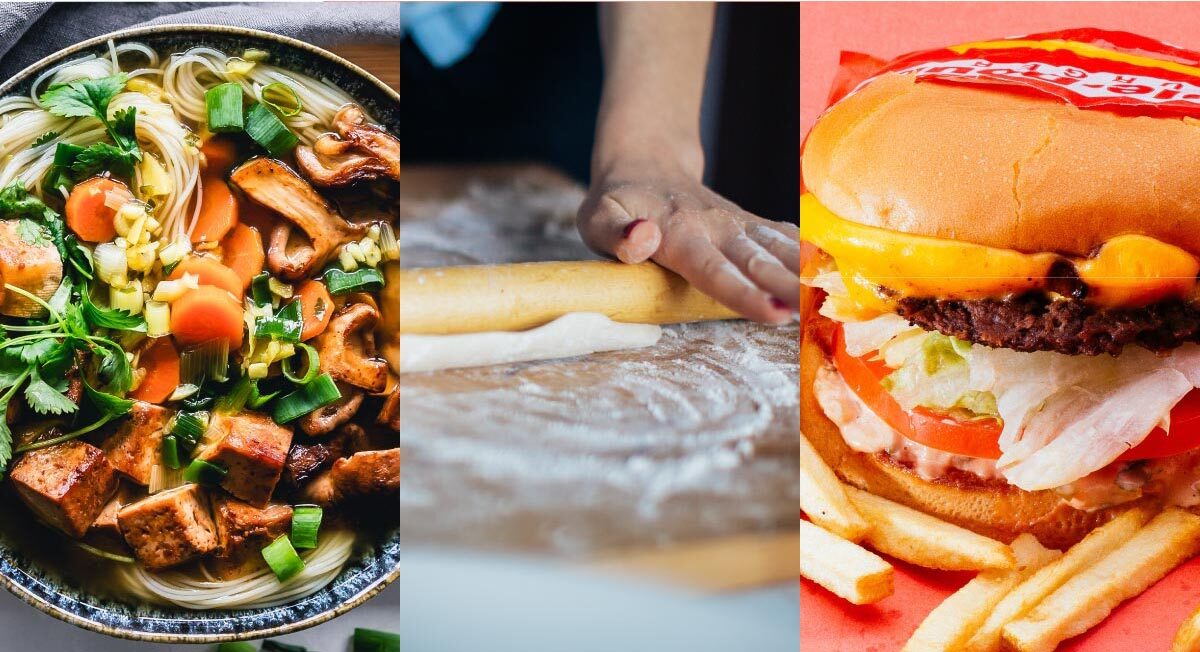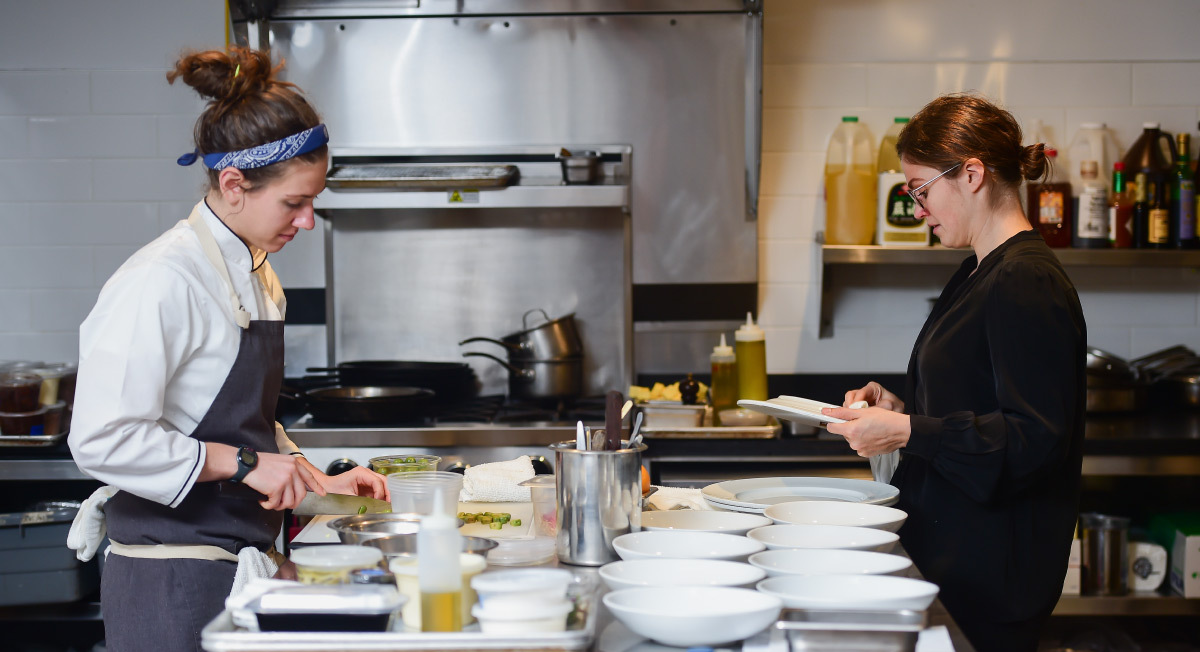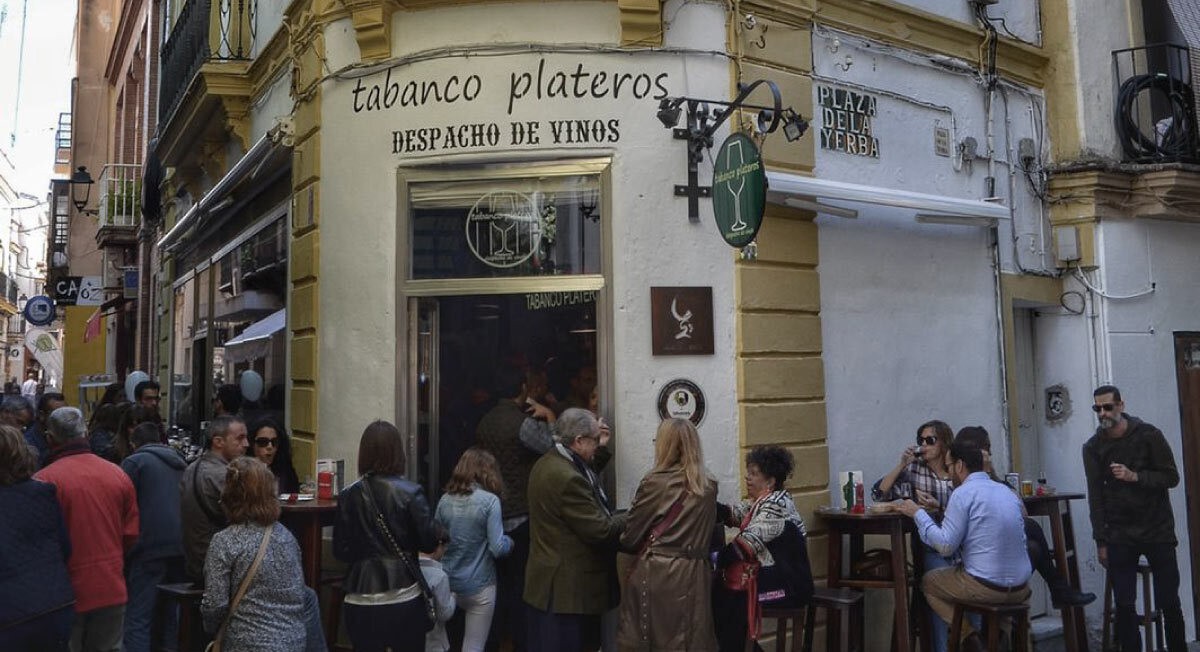It’s that time of year again, when the cold starts to break and warmer weather gradually begins to grace us with its presence.As the seasons change, we often seek out and welcome food and drink that reflects our surroundings.When things start to heat up, our desire for beverages that quench our thirst and cool us off grows exponentially with the increase in temperature.In a world filled with slushies and punches, there is one classic cocktail that has been helping us usher in Spring and Summer for centuries: Sangria
“American cuisine is a diverse and varied culinary tradition that has been shaped by a combination of Native American, European, African, and Asian influences, among others. It’s important to note that the United States is a melting pot of cultures, and as a result, American cuisine reflects a wide range of flavors, ingredients, and cooking techniques from around the world. Here are some key elements and dishes that are commonly associated with American cuisine:
- Regional Diversity: American cuisine is heavily influenced by regional differences. Different parts of the country have their own distinct culinary traditions and specialties. For example, Southern cuisine is known for dishes like fried chicken, cornbread, and collard greens, while New England is famous for its clam chowder and lobster rolls.
- Ethnic Fusion: American cuisine is known for its ability to incorporate and adapt dishes from various cultures, allowing chefs to experiment with ingredients freely. This has led to the creation of fusion foods, like sushi burritos, Korean tacos, and more.
- Cajun and Creole Cuisine: Hailing from Louisiana, these cuisines are known for their bold and spicy flavors. Cajun cuisine includes dishes like gumbo (a rich stew with a mix of meat and/or seafood), while Creole cuisine features dishes like jambalaya (rice cooked with a variety of ingredients) and étouffée (a thick seafood stew).
- Soul Food: Soul food is a cuisine with African American roots, featuring dishes like fried chicken, collard greens, cornbread, and black-eyed peas.
- Fast Food and Convenience Foods: The United States is known for its fast-food culture, with chains like McDonald’s, Burger King, and Subway having a global presence. Convenience foods like frozen dinners and pre-packaged snacks are also widespread.
- Farm-to-Table Movement: In recent years, there has been a growing emphasis on fresh, locally sourced ingredients and sustainable farming practices. The farm-to-table movement has gained popularity, encouraging the use of seasonal and locally produced foods.
- Food Festivals: Across the United States, there are countless food festivals celebrating specific dishes or culinary traditions. These events showcase the diversity and creativity of American cuisine.
- Food Challenges: Some restaurants offer extreme food challenges, where patrons attempt to consume massive portions of food within a certain time limit. These challenges have become a unique aspect of American dining culture.
- Food TV Shows: Television programs like cooking competitions, travel and food shows, and cooking tutorials have played a significant role in shaping culinary trends and inspiring home cooks.
- Food Delivery Services: The advent of food delivery apps has made it easier for people to enjoy a wide range of restaurant dishes from the comfort of their homes.
- Food-Based Social Media: Platforms like Instagram have given rise to the “food porn” trend, where visually appealing dishes are shared and admired online.
- Community Gardens and Urban Farming: Many cities have embraced community gardens and urban farming initiatives, promoting sustainable and local food production.
- Celebrity Chefs: Renowned chefs like Julia Child, Emeril Lagasse, Gordon Ramsay, and others have shaped culinary trends and inspired home cooks to try new techniques and ingredients.
- Food Blogs and Influencers: The digital age has given rise to food bloggers and influencers who share recipes, reviews, and culinary experiences, contributing to the ongoing evolution of American food culture.
- Thanksgiving Dinner: Thanksgiving is a major holiday in the United States, and the traditional Thanksgiving dinner typically includes roast turkey, stuffing, mashed potatoes, cranberry sauce, and pumpkin pie.
- Casseroles and Comfort Food: American cuisine often features hearty, comfort-oriented dishes like casseroles, macaroni and cheese, and meatloaf.
- Food Trucks and Fusion Cuisine: In recent years, the food truck scene has gained popularity, offering a wide range of creative and fusion dishes that blend different cuisines and flavors.
- Diner Culture: Diners are iconic establishments that serve classic American comfort foods like burgers, sandwiches, milkshakes, and all-day breakfasts. They often have a nostalgic and retro ambiance.
- Food Tourism: Many people travel to experience specific food scenes, such as exploring the food stalls of food markets, trying local specialties, and visiting famous restaurants.
- Burgers and Sandwiches: The hamburger is a quintessential American dish, often served with various toppings like lettuce, tomato, cheese, and condiments. Sandwiches, in general, are popular and can range from classic deli sandwiches to elaborate creations.
- Buffalo Wings: Buffalo wings are deep-fried chicken wings coated in a spicy sauce, typically served with celery sticks and blue cheese dressing. They originated in Buffalo, New York, and have become a prevalent appetizer or party food.
- Barbecue: Barbecue, or BBQ, is a major part of American food culture. It varies across regions, with styles like Texas, Kansas City, Carolina, and Memphis BBQ, each characterized by different types of meat, sauces, and cooking methods.
- Tex-Mex and Mexican-Inspired Dishes: Tex-Mex cuisine is a fusion of Texan and Mexican flavors. Dishes like tacos, burritos, enchiladas, and nachos have become staples in American cuisine.
- Pizza: While originating from Italy, pizza has been fully embraced by the United States. The American style of pizza often features a thick crust and a variety of toppings.
- Seafood: Due to its extensive coastline, seafood plays a significant role in American cuisine. Common seafood dishes include clam chowder, crab cakes, and various types of fish.
- Pancakes and Waffles: Breakfast foods like pancakes (flat, round cakes made from a batter) and waffles (batter cooked in a special waffle iron) are commonly served with toppings like syrup, butter, fruits, and whipped cream.
- Hot Dogs: A cooked sausage, typically made from beef or pork, served in a sliced bun and often topped with mustard, ketchup, onions, relish, and more.
- Macaroni and Cheese: A comfort food dish made with cooked macaroni pasta and a cheesy sauce.
- Fried Chicken: Chicken pieces that are breaded and fried until crispy and golden brown.
- Health Consciousness: With a growing emphasis on health and wellness, many Americans are incorporating more fresh produce, whole grains, and plant-based options into their diets.
Remember that American cuisine is incredibly diverse, and the dishes and influences can vary widely depending on the region, cultural background, and personal preferences.”
NOT BAD FOR AN AI, HUH?
As anthropologist Sidney Mintz once put it, a cuisine cannot exist, “unless there is a community of people who eat it, cook it, have opinions about it, and engage in dialogue involving those opinions.” After many years of studies and research, he concluded (not in the absence of controversy) that “America’s foodscape simply precluded a single American cuisine.” On the other hand, Professor Paul Freedman, an expert food historian also at Yale University and author of “American Cuisine and How It Got That Way”, defines American cuisine as a combination of three recurrent themes: regionality, standardization, and variety. Freedman endorses Mintz’s idea that cuisines must be cooked and eaten regularly and customarily, but he also takes a surprising deviation: instead of considering representative dishes, styles of cookery, or discourse, Freedman seems to equate a ‘cuisine’ with the foods broadly available, without consideration of whether these foods are markers of identity or makers of meaning within American culture. Well, Americans have a long tradition of gathering around food; the ancient Thanksgiving Day celebration and the beloved summer cookouts are two solid examples. Dining out with friends and family is widely performed. So, there must be some kind of American cuisine to demarcate, no? Or conversely, when we choose to have Thai food one night, Mexican the next, and an occasional celebratory steakhouse dinner, that can’t count as part of the idea of a single American cuisine, can it?

BEYOND FAST FOOD
What has been the spread of eating habits and the evolution of the food industry in America in recent times? Freedman gives us some insight:
“By the early twentieth century, the era of homogenized American food was in full swing. Bolstered by nutrition ‘experts,’ marketing consultants, and advertising executives, food companies convinced consumers that industrial food tasted fine and, more importantly, was convenient and nutritious. No group was more susceptible to the blandishments of advertisers than women, who were made to feel that their husbands might stray if not satisfied with the meals provided at home. On the other hand, men wanted women to be svelte, sporty companions, not kitchen drudges. The solution companies offered was time-saving recipes using modern processed helpers. Men supposedly liked hearty food, while women were portrayed as fond of fussy, ‘dainty,’ colorful, but tasteless dishes—tuna salad sandwiches, multicolored Jell-O, or artificial crab toppings. The 1970s saw the zenith of processed-food hegemony, but also the beginning of a food revolution in California. What became known as New American cuisine rejected the blandness of standardized food in favor of the actual taste and pleasure that seasonal, locally grown products provided. The result was a farm-to-table trend that continues to dominate.”
Yes, that constant tendency for food industrialization and the pressure to eat with urgency is a problem. For many, convenience, low prices, and grab-and-go items may prevail over more healthy options. It’s a fact: Fast food is a widespread part of food culture in America and is a regular routine for many residents. The Center for Disease Control and Prevention reported in 2018 that 36.6% of adults consumed fast food on any given day! While fast food is certainly popular in the US, it is far from the only food culture in America you will come across. There are many foodie communities all over the US dedicated to supporting unique dining establishments, farmers’ markets, and ethnic cuisine, among others. Many restaurants also offer dining choices for pescatarians, vegetarians, and vegans these days. Additionally, there has been a more recent movement that could be described as ‘Fast Good’ where wary restaurateurs open businesses that tend to be self-service like fast food but use fresh ingredients with made-to-order options like a finer dining eatery.

After all these years, our personal impression is that the US has undergone a sort of ‘food revolution’ and remarkably improved its culinary services in the last couple of decades, (possibly along with a growing consumption of quality wine to accompany meals?). Provided by a hungry army of talented professional cooks, specialty grocers, and mindful housekeepers, today, there is virtually no small town out there without a place that tries to prepare some sensible meal.

Danielle Ayer and Joy Gerardi. Copa Jerez 2018 US Finals
The pandemic certainly hurt the industry and slowed down this promising headway, but compared to how it was years ago, the overall ‘refinement’ is unquestionable. In the past, food culture in America, especially in restaurants, tended to fall into two categories: either fast food or rather expensive sit-down dining like (again) the usually overrated steakhouses. Today, though, there is an expanding third group that covers a more balanced middle ground using fresh ingredients and healthy cooking techniques. This latest development is something that proves true to us when, for instance, comparing the Los Angeles restaurant scene that we found when SLS Hotel in Beverly Hills was opened back in 2008, to what it is today.
GOOD FOOD AND… WINE
Above we already mentioned the theory that increasing domestic wine consumption may have contributed to the quality food offerings, but I ask you does wine make you more aware of the taste of what you eat?
Wine has had a long history of being served as an accompaniment to food. In many cultures, wine has had a similar history of being a staple at the dinner table, and in some ways both the winemaking and culinary traditions of a region have evolved together over the years. Many pairings that are considered “classics” today emerged from the centuries-old relationship between a region’s cuisine and its wines.

Both winemaking and culinary traditions of a region, like Jerez, have evolved together over the years. You can still feel this interconnection in towns and cities like Jerez, where you can get sherry wine and food together
According to various studies, eating food while drinking wine may be beneficial for your body, as this paper by Johns Hopkins University explains: “Most alcohol is absorbed by the small intestine. Some is also absorbed by the mouth and stomach. By eating before drinking, the rate at which alcohol reaches the small intestine is slowed, helping to taper absorption to a pace that your body can more easily manage. This can help individuals to avoid feeling too drunk too quickly. Consuming food when drinking alcohol increases the rate of alcohol elimination from the bloodstream by 25-45%. Typically, the best options will be foods that contain a mixture of protein, fat, and carbohydrates.”
Simultaneously, drinking wine while you eat food may also produce advantageous reactions; wine can decrease the risk of getting food poisoning, aid in the digestion process of certain foods, lowering levels of inflammation, and even help metabolize sugars and starches properly, reducing the risk of developing type 2 diabetes.
The large body of research suggests that in terms of health effects, wine, and food are better together. While studies continue to investigate the interactions between wine and food, those who enjoy finding the perfect pairing for their meals can consider these synergistic benefits a bonus!
SHERRY AND CHEFS SERIES
From day one, we have been absolutely convinced of the potential, wonderful harmonies that can be obtained when putting American cuisine up against sherry wines. Since then, we have regularly been posting pairings of classic American dishes and numerous sherry styles; from bone dry, light, and savory wines, to dark and bold, to wines with several levels of sweetness. We encourage you to pick any product out of your pantry or fridge and let us match it to one of our dearest wines. We have been so assured of the sherries’ abilities to successfully accompany so many flavors, that we decided to pay a visit to a bunch of our chef friends across the US, each of them mastering some type of regional or ethnic cuisine. Each of the five Sherries & Chefs episodes that you can watch below features a different culinary theme and showcases the extraordinary versatility of these wines. Please join us on this gastronomic tour around some of the most iconic American destinations and their extra-flavorful contributions.

Asheville
Asheville was our first production. Going and meeting our friends Felix and Katie at their restaurants in Asheville, NC was a no-brainer for us. Sharing substantial culinary background, like our time working together at elBulli restaurant, made it a very organic choice for launching the series. Back then, Nightbell was their classic American comfort food bar, and the sherry cocktails that we mixed for some of their dishes went really nicely.
Los Angeles
Los Angeles was our summery farm-to-table episode, featuring a colorful visit to the local Santa Monica farmer’s market, which provided us with the freshest ingredients. Meeting Chef Tim was a pleasure, and his honest and clean food proved to be phenomenal with a wide variety of sherry styles.
Washington, DC
Chef Katsuya knows his ramen. If you are in DC sometime, make sure you stop by Daikaya. A personal favorite for food and sherry pairings since discovering it while living in Las Vegas. Thick, porky Japanese ramen noodles and dry, oxidative sherry wine are a must-try combination.
Portland, OR
We spent a couple of cold days in Portland with a remarkable chef couple, Gabrielle and Greg, who have gained national fame for their fine cuisine at Ox. While there we were introduced to Jacobsen salt, so good its addictive, and food always tastes better with it. The exercise with the entire range of Lustau wines and their salts was a life-changing experience. When you add some superb firewood cooking the day just keeps getting more delicious.
Boston
After the unexpected oyster treat that we had in Portland, we needed to dedicate a full episode to this wonderful American specialty. Boston is one of the world’s top destinations for oysters and the video will show you why. Chef Michael put together an incredible day learning everything about their renowned shellfish and North Atlantic seafood, and eating like kings!







